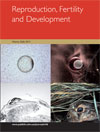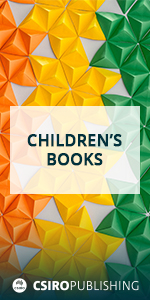Reproduction, Fertility and Development
Volume 25
Number 6 2013
Bisphenol A (BPA), a chemical used in many consumer products, interferes with the endocrine system of mammals, including humans. The present study investigated the effects of BPA on spermatogenesis and semen quality, and found that BPA decreased both the quantity and quality of mouse spermatozoa, resulting in abnormal offspring that were smaller and had a low-quality pelage. The results demonstrate that BPA hampers spermatogenesis and the development of offspring.
Both the quality and yield of cloned buffalo embryos was higher following the use of cells obtained from fetal or newborn buffalo calves than those obtained from adult buffaloes, probably because of their less differentiated state. A live normal calf was born following transfer of frozen–thawed cloned buffalo embryos to a surrogate recipient. This suggests that cloned embryos can be stored frozen for long periods of time.
The European brown hare exhibits superconception, whereby the maternal reproductive tract hosts two sets of conceptuses at different developmental stages. The early embryo development of the hare has not been described. In this study, we studied oviduct transport and implantation stages by embryo flushing, live high-resolution ultrasound and by histology of age matched pregnant tissues. In contrast to the rabbit, not only total pregnancy length, but also transition phase of the early embryos from the ovidcut to the uterus is prolonged in the hare, probably enabling superconception.
Manipulation of female fertility has become an increasingly important tool for the management of captive and free-living marsupial populations. This study demonstrated that pre-pubertal GnRH agonist treatment significantly delays the onset of puberty in female tammar wallabies. This has potential application for the management of overabundant kangaroo populations and enhances our understanding of the physiological processes that occur at the time of puberty in this model species.
A better understanding of the interaction between the oocyte and surrounding cumulus cells is of crucial relevance for fertility. We have assessed the expression of receptors for oocyte-derived factors during in vitro maturation and demonstrated that FSH dramatically stimulates expression of receptors for fibroblast growth factors in bovine cumulus cells. These data provide further evidence for an important role of fibroblast growth factors in follicle development.
Genes of the Y chromosome long arm are crucial for male fertility, but now it appears that they can also influence female reproduction. We have shown that female mice sired by males with the impaired Y chromosome differ in some periovulatory processes from genetically identical females but having fathers with the intact Y chromosome. Since females do not inherit Y chromosome, its influence consists probably in epigenetic modifications of genetic material in X-bearing spermatozoa.
Assisted reproduction techniques in the bovine are associated with high intrauterine mortality. We investigated the development of embryos and fetal membranes and found that the yolk-sac and the cardiovascular system seem to be vulnerable to morphogenetic alterations, especially in cloned embryos. Because the abnormalities observed may be responsible for the high mortality rate, future studies into gene expression and early vascularisation processes seem to be important.
Freezing of human eggs has a wide and significant clinical benefit for many women, including the preservation of female fertility before its loss due to disease or aging. The aim of the present study was to determine the optimal freezing solutions that can be used to preserve the structural and functional integrity of human eggs. The outcome will make a significant practical impact in the area of egg freezing, hence contributing to the improvement of female fertility.
The need for insulin in the medium in which preantral follicles are cultured in vitro and its interaction with FSH remain controversial. Thus, we evaluated the association between different concentrations of insulin and FSH in the development of canine preantral follicles in vitro. In the absence of FSH, a high insulin concentration is beneficial for follicular viability, but for best follicular growth it is recommended that the association of insulin with FSH is added to the culture medium.
The sperm cryopreservation process affects the quality and fertilising ability of the spermatozoa. The aim of this study was to determine if the quality and functionality of frozen–thawed boar spermatozoa could be enhanced by treating the spermatozoa before cryopreservation with cholesterol-loaded cyclodextrins. The results show that the ability of the spermatozoa to bind to oviductal epithelial cells in vitro was enhanced, which could have some effect on fertilisation success in vivo.
When stored in liquid form, bull spermatozoa can live for up to 2 weeks; however, its ability to achieve a pregnancy is compromised after just 4–5 days of storage, which may be a consequence of changes in the sperm cell membrane lipid profile caused by attack from reactive oxygen species. This study, which aimed to investigate the effect of the addition of long-chain fatty acids to bull spermatozoa in vitro, found that while palmitic and oleic acids proved beneficial to spermatozoa, docosahexaenoic and eicosapentaenoic acids were detrimental. Thus, the addition of palmitic and oleic acids to bull spermatozoa in vitro could prolong their fertile lifespan.
Using oocytes from in vitro grown and matured follicles is an alternative to overcome the limited supply of mature, fertilisable oocytes for assisted reproduction techniques. The aim of the present study was to investigate the effects of a dynamic medium containing growth differentiation factor 9 (GDF-9) and FSH on the survival, activation, steroidogenesis and in vitro growth of caprine preantral follicles during long-term culture. The results show that using a dynamic GDF-9/FSH medium resulted in significant and continuous follicular growth and maintenance of follicular ultrastructure, which may contribute to improvements in vitro embryo production.
Embryo development is dependent on a tight regulation of the local maternal immune system, which is critically important in pregnancy recognition as well as facilitating implantation. Our aim was to document the expression of a broad range of immune-related genes in the endometrium of heifers producing viable and degenerate embryos on Day 7 after oestrus. We found that disturbances in the immune response at this stage of embryonic development can have detrimental implications for embryo survival.




